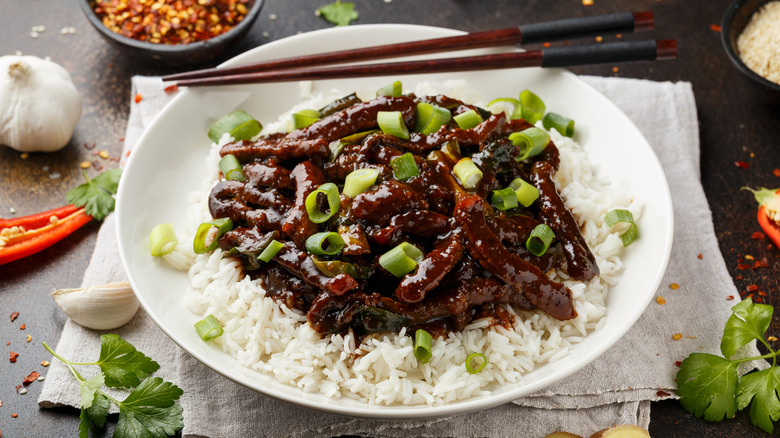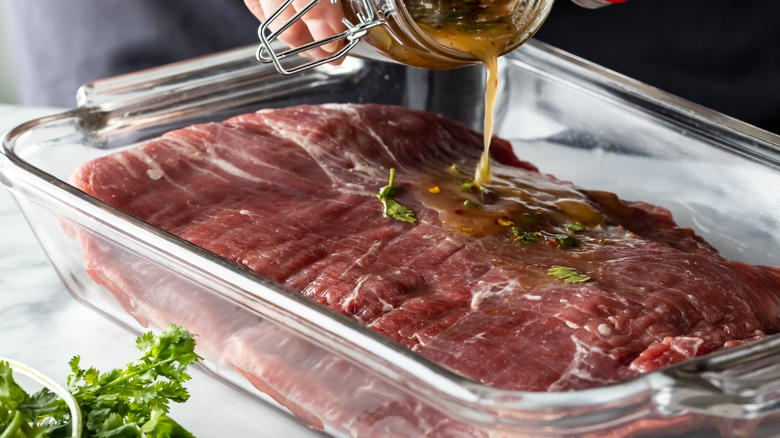Turn Out More Tender Steak With The 'Velvet' Effect Of Baking Soda
No matter what steak dish you're preparing, it's important to know you have the best cut. This isn't just in terms of quality, but also having the right meat for the dish. Filet mignon and T-bone steaks are great to heat on the grill or skillet quickly, but tougher cuts like chuck and flank steaks are going to be better served by braising or stewing. The problem is we don't always have time for that. That's where velveting comes in.
Velveting is the technique traditionally used by Chinese restaurants to tenderize meats, and help protect them from high-heat cooking methods. It's great for cooking tough meats in a hurry, or just to get the juiciest, richest chicken, pork, or fish. Conventional wisdom might say the best way to tenderize meat is to marinate it for hours, but that's mostly a myth. Instead of relying on acids, the velveting technique relies on more alkaline substances like cornstarch and baking soda.
What is velveting?
Velveting is a unique style of marinade that is common in Chinese cooking. Baking soda — or cornstarch — is used in a marinade that the meat rests in for a short time. During that time, the baking soda will raise the ph (or reduce the acidity) on the surface of the meat, which prevents the proteins in the meat from bonding together tightly when they cook. Normally, cooking certain meats would create a tough and chewy texture, but because the proteins cannot bond, they remain loosely assembled and, therefore, tender.
Once the meat has been appropriately velveted, it can be cooked normally. This method is best used on tough or dry cuts of meat. While you can use it on anything you'd like without any negative effects, it may not do much to a normally quite tender cut. This technique is the secret behind truly great chicken stir frys, and other classic Chinese wok-fried foods.
How to velvet meat
The process of velveting meat is actually simpler than using other marinades because the baking soda just needs to coat the exterior and not work its way deep into the meat's surface; it only takes an hour at the most to have an effect.
You can even speed up the process by either poking holes into your meat or scoring it beforehand. Once it's prepped, just work up a marinade with whatever flavors you'd like to add (e.g. soy sauce, garlic, ginger), and add 1 ½ teaspoons of baking soda per pound of meat. Cover it and let it rest in the refrigerator for 30 to 60 minutes, depending on the size of the meat. When it's ready, give it a quick rinse to remove any excess baking soda, and pat dry before cooking.
Many Chinese kitchens will also take the process a step further by giving the velveted meat a quick oil-blanch, though this can take a lot of oil to do properly. Instead, try a water blanch with a little bit of oil added to it. This can help give your meat that soft velvety tenderness of Chinese takeout, but it isn't a necessary step.


